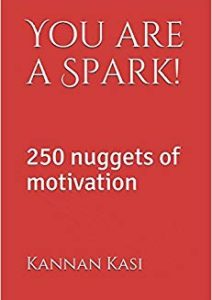All of us are fascinated by stories. Aren’t we? Stories take us to a different world and give us wings to fly in that world. We identify ourselves with one of the characters in the story, more often than not we identify with the protagonist. Stories capture our imagination and we are excited to know what’s next. We start visualizing the sequence and in the process we get inspired to take action.
Why Story Telling?
- Everyone likes stories.
- It helps the listeners to visualize and the visuals / images they see in their mind sticks with them.
- Stories help us connect with the audience emotionally. And buying is an emotional decision first then it substantiates with logical reasoning, rationale, meeting requirements and other criteria.
- Stories are successfully developed by big brands like Apple, Tesla, Amazon, Google, BBC etc.
- Neural Coupling: The speaker – listener neural coupling or in other words, mirroring of their brains happen, when the listener is able to predict what the speaker will say next and in such a situation syncing happens between their brains and is supposed to be the efficient communication. And Story Telling helps in neural coupling.
- Buyers are able to connect to the story and imagine what they can do or will do in a similar situation.
- Every story has a core. At the core, there is a problem to be solved and the solution comes in the climax. Your product or service is the solution. The protagonist uses your product / service and comes out victorious. Your product or service is unbeatable. That is the message you want to convey.
- The entire Story can also be a metaphor.
- It creates a community of users.
- It is etched in memory for a long time vs. boring presentations.
How to tell Stories?
- It has to have a storyline. And the storyline has to be captivating. Sparking imagination.
- The story should help in connecting emotionally with the buyers.
- Third, focus on prospects’ ambition: Where are you right now? Where do you want to be? How will our product / service help you reach there?
- Story should not ask the buyer to buy the product/service. That is best left unsaid. Just provide the proof of the Protagonist winning with your product/service to solve the core problem.
- Idea is to capture the minds of the buyers for life. Not sell one time. Or to make money. Money will follow.
- It has to heighten the emotions and make the buyers to take action.
- It has to inspire or spark the fire in the bellies of the buyers. The buyers should get the message in the story.
- Promote values.
- Stand for a cause.
- The story should end in a positive note. Happy ending.
Other ways to engage the Prospect:
- Undertake homework before starting to engage them.
- Understand their problem statement.
- Be Authentic.
- Respect them and their time.
- Look at it from their perspective.
- Imagine that they are already your customers and treat them accordingly.
- Find what they stand for. And support them.
- Identify other interest areas. May be golf. Or Football. Play with them.
- Introduce your team to theirs. Let the teams interact with each other.
- Last but not the least, Be on the same page, with your prospects
It has to be a true story. We cannot make things up. If we look close enough, we will be able to find that story. And don’t solve the core problem in one scene. It is important to explain how the protagonist suffered, went almost bankrupt, was frustrated but did not lose hope, had tremendous will power and narrate how he/she fought back before becoming victorious by solving the core problem. It should resonate with the buyers at the bottom of their heart and help them think that their situation can be solved too; they are no less and inspire them to take action.











